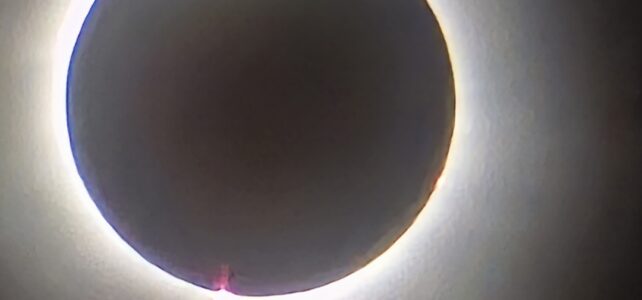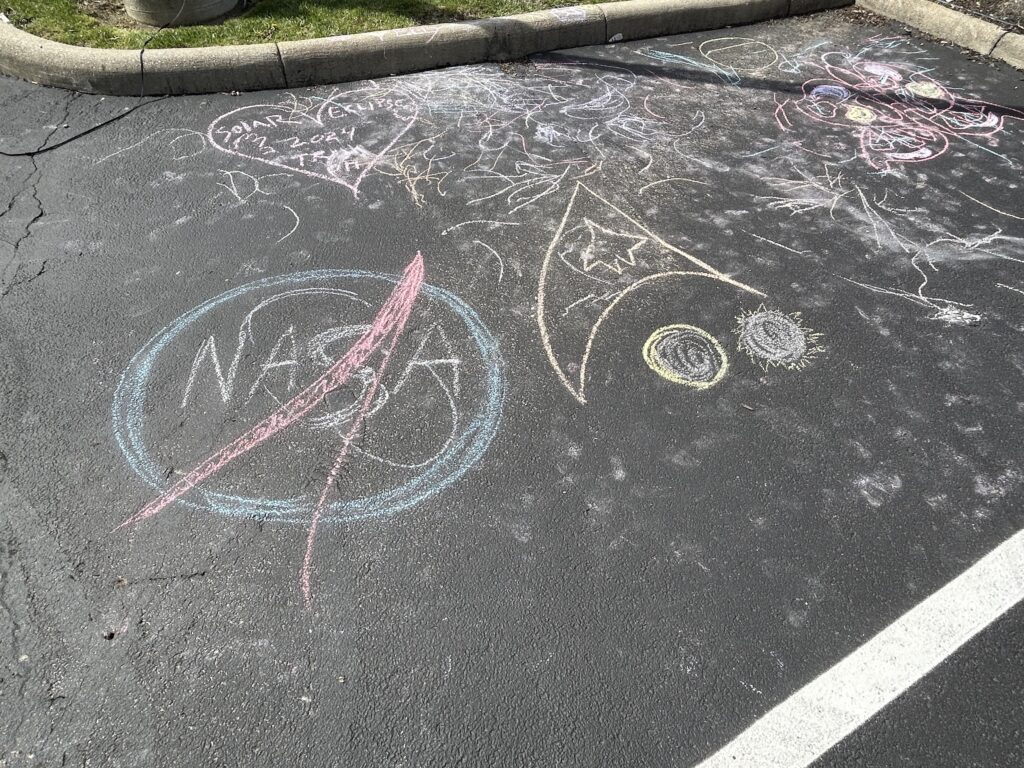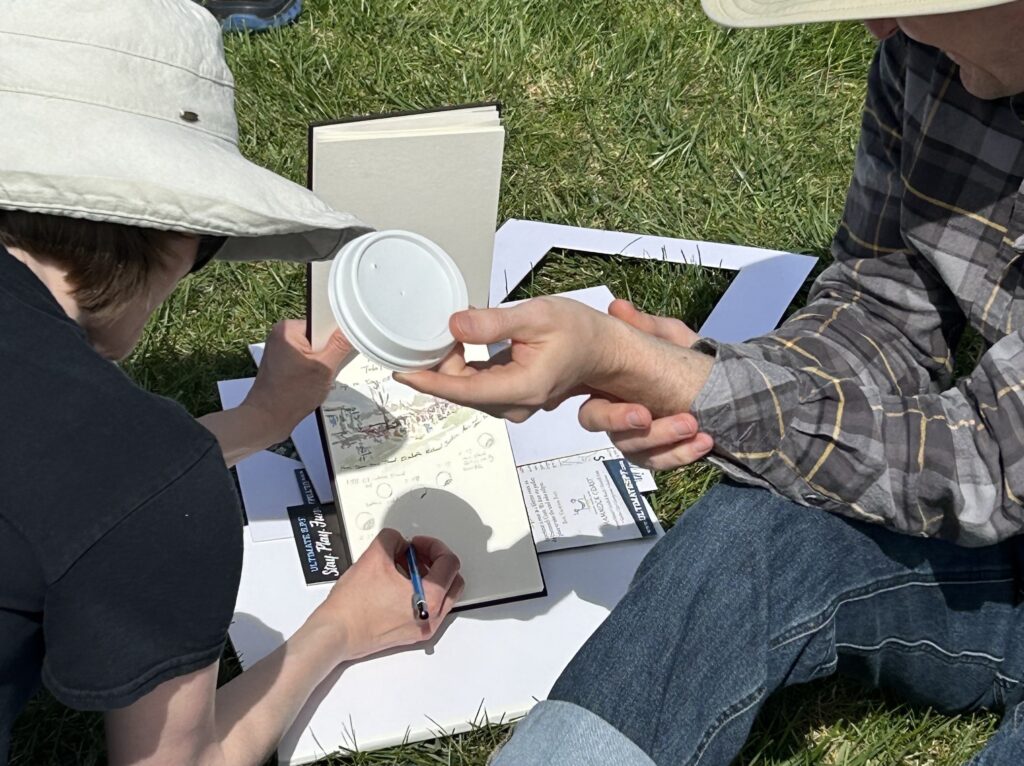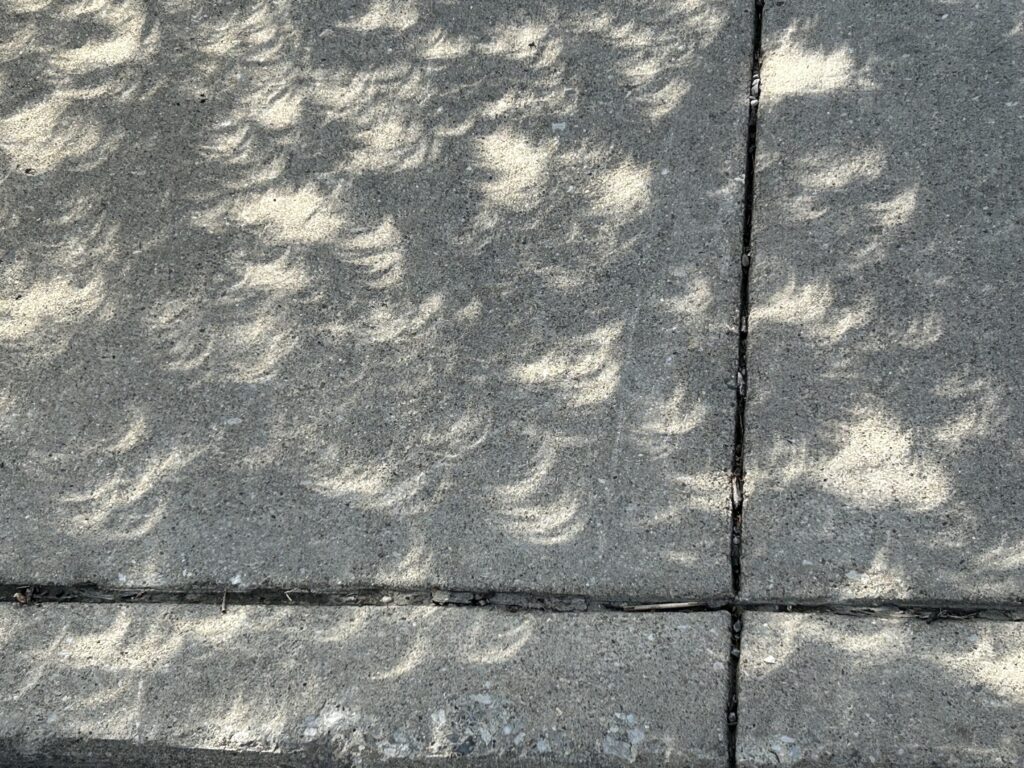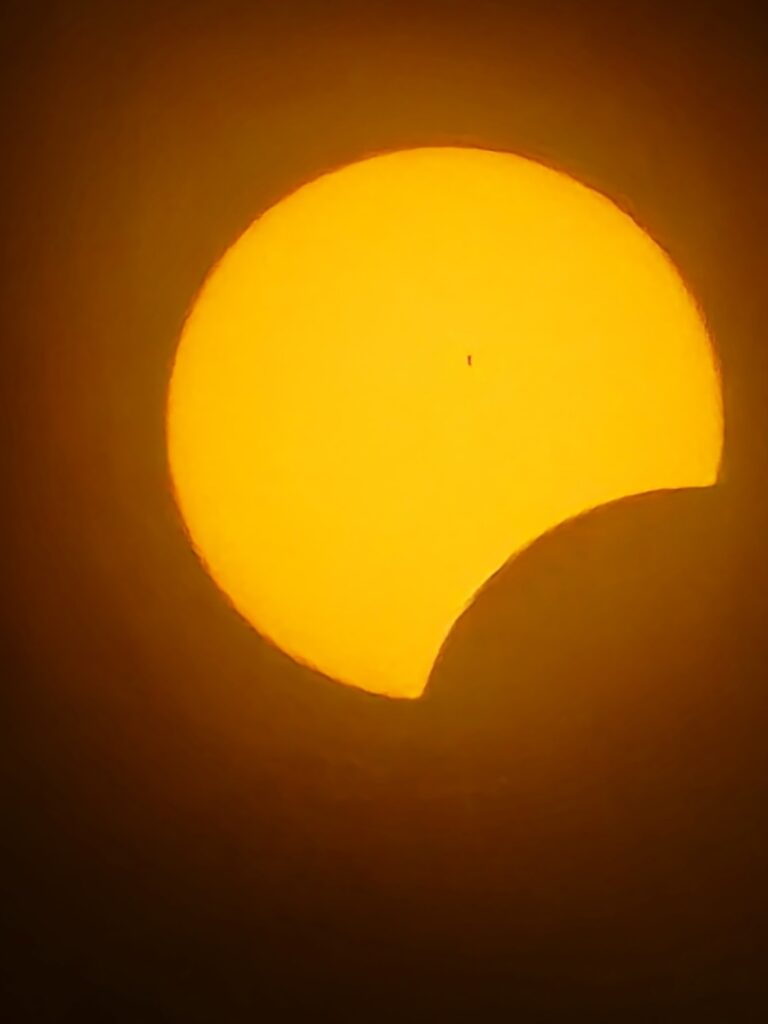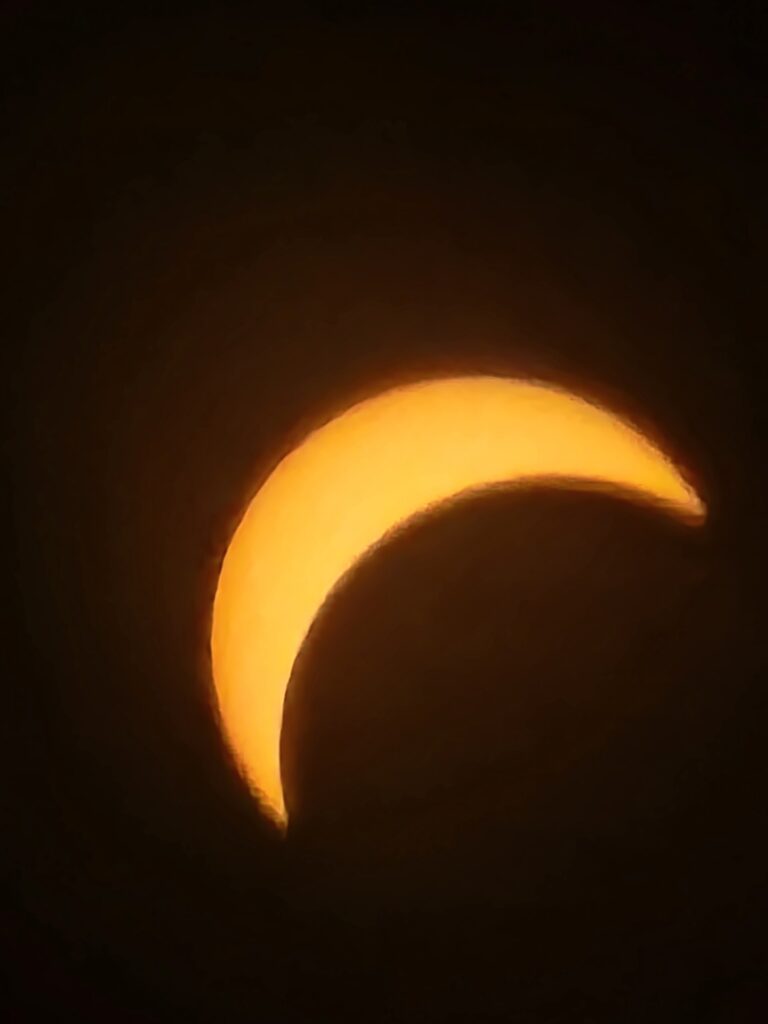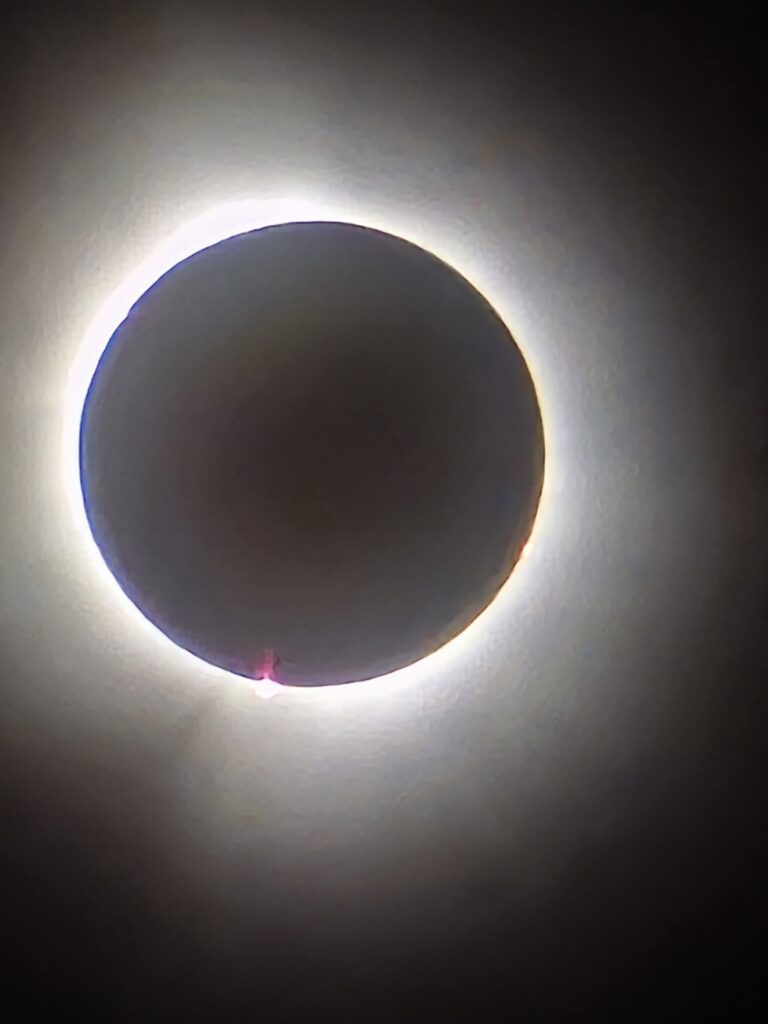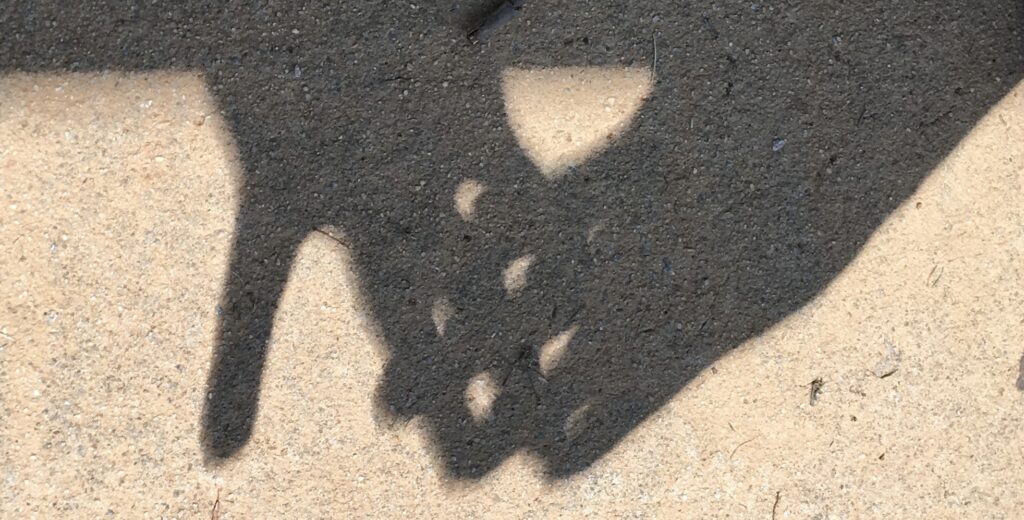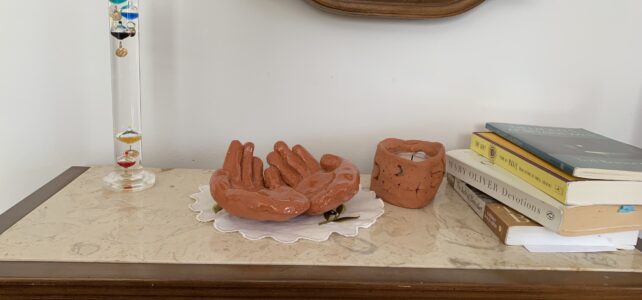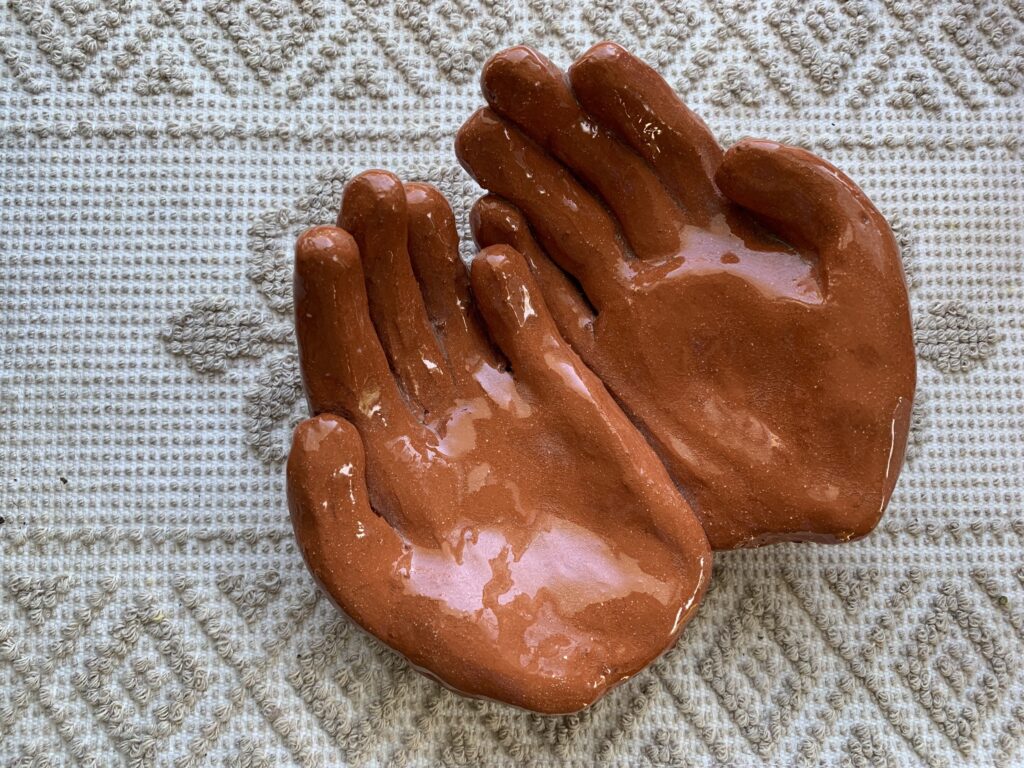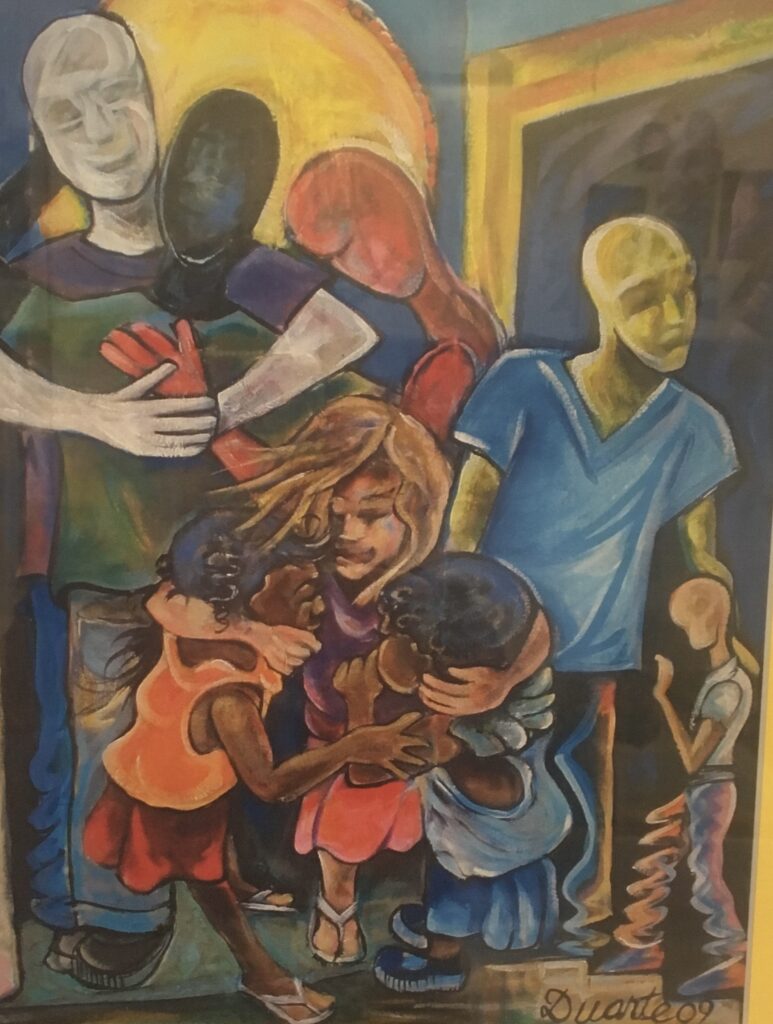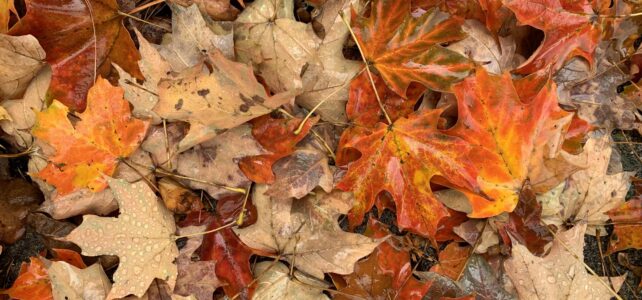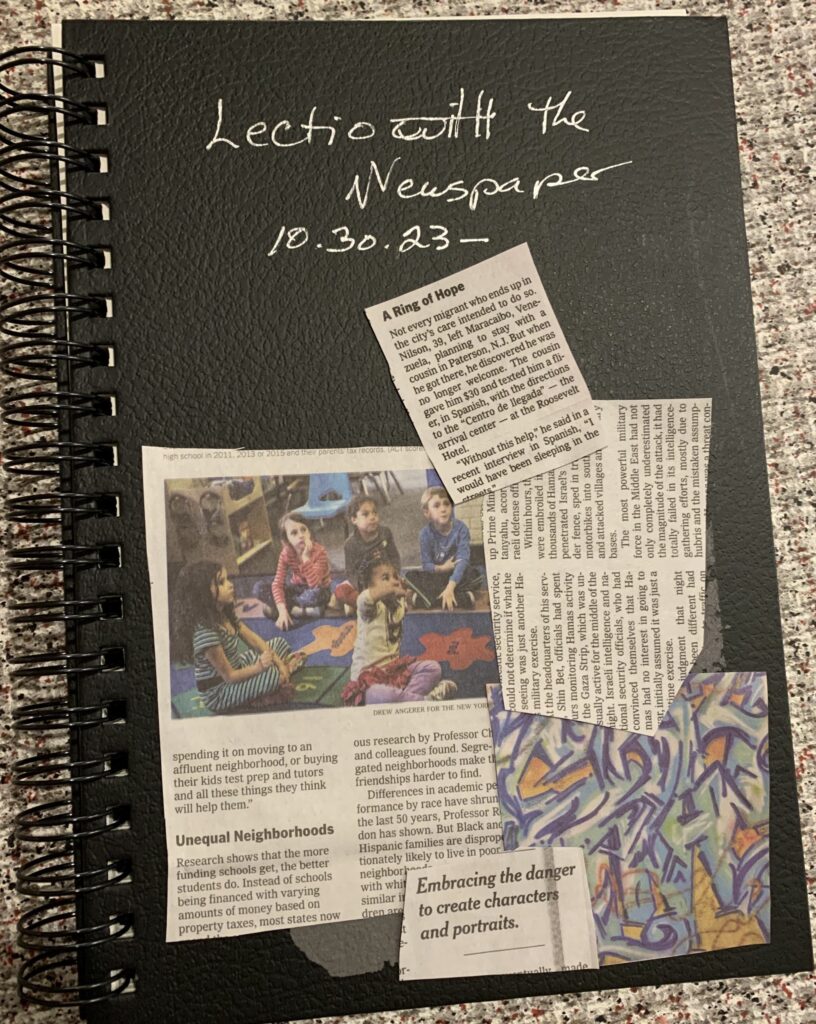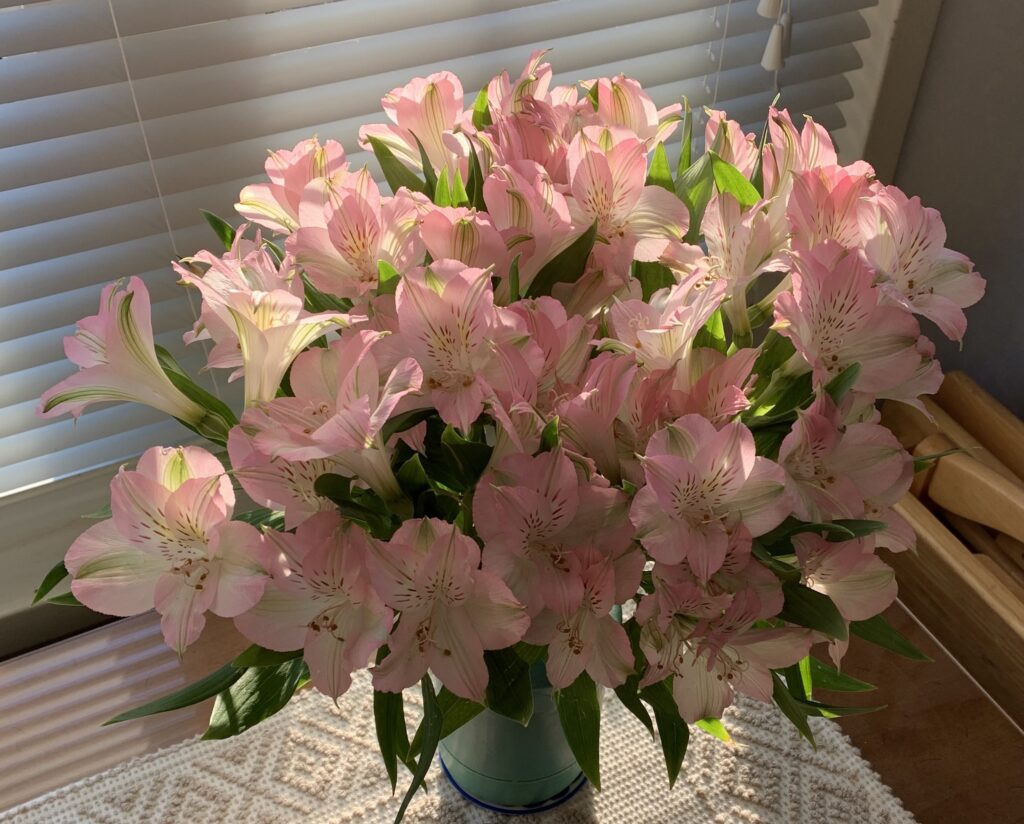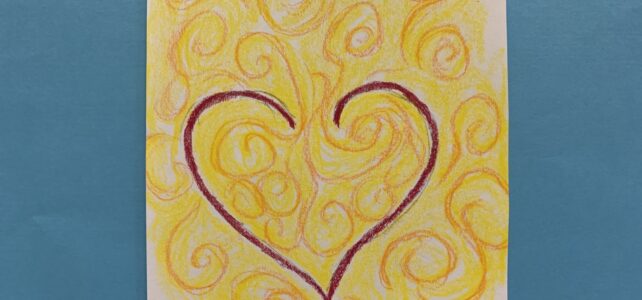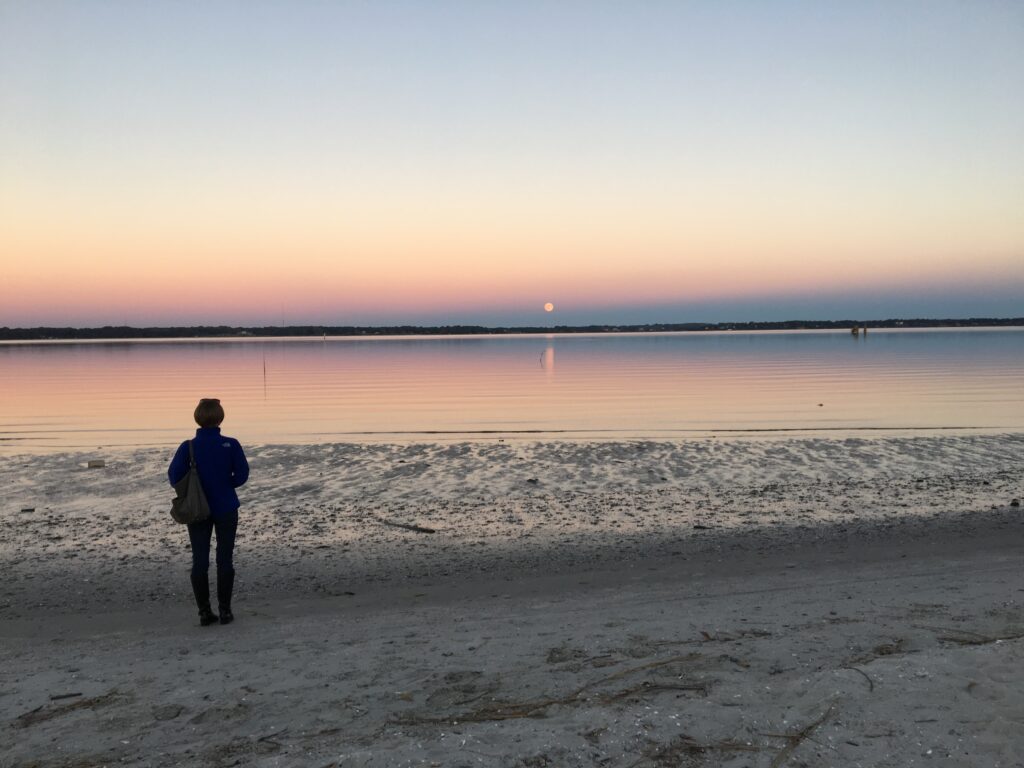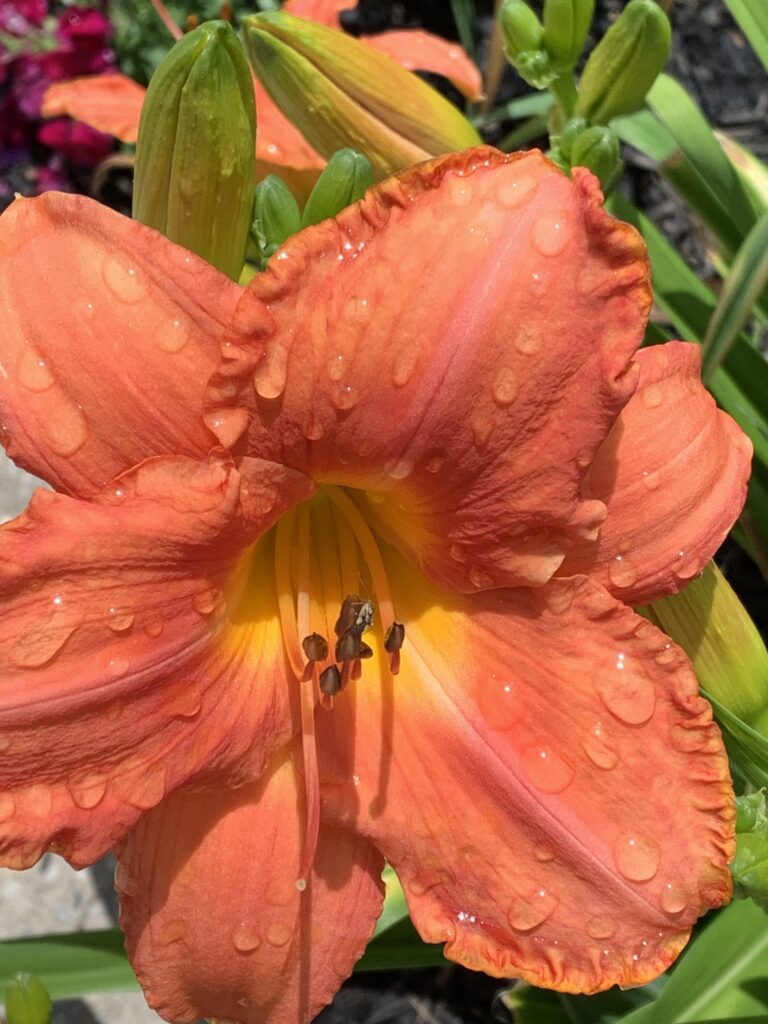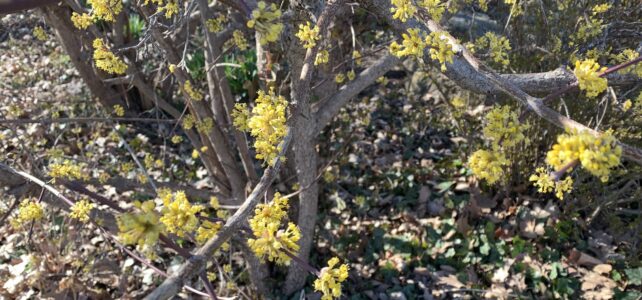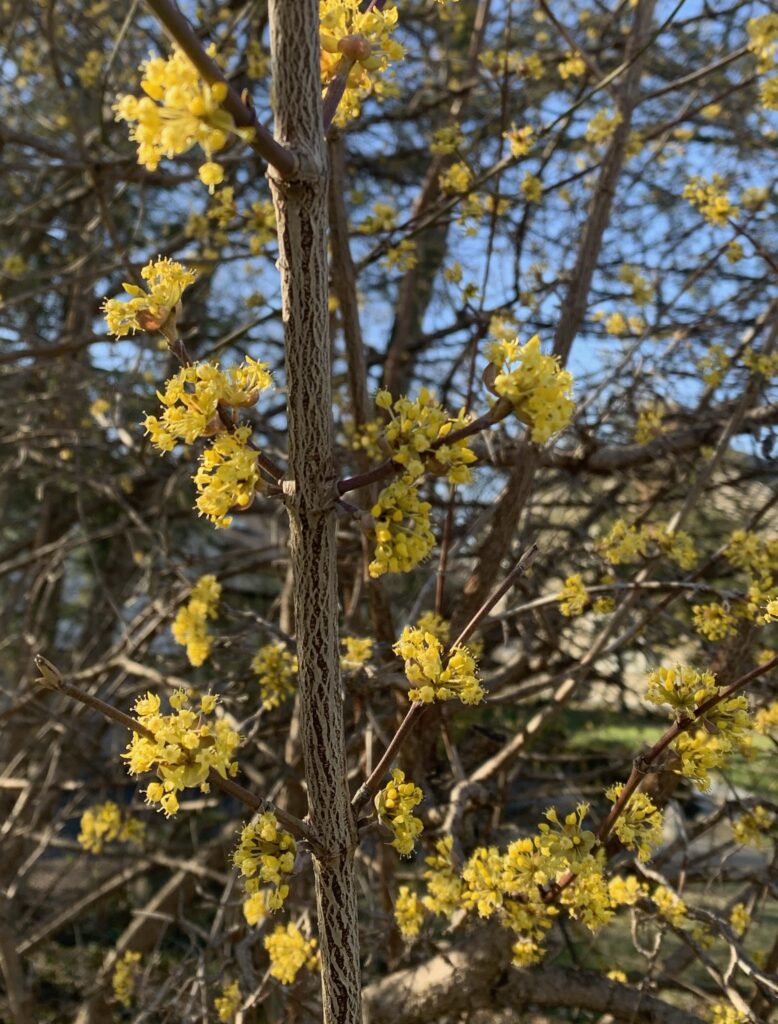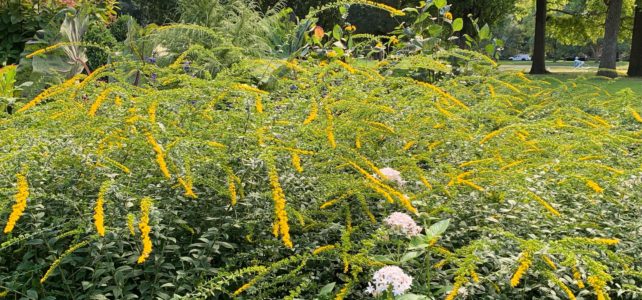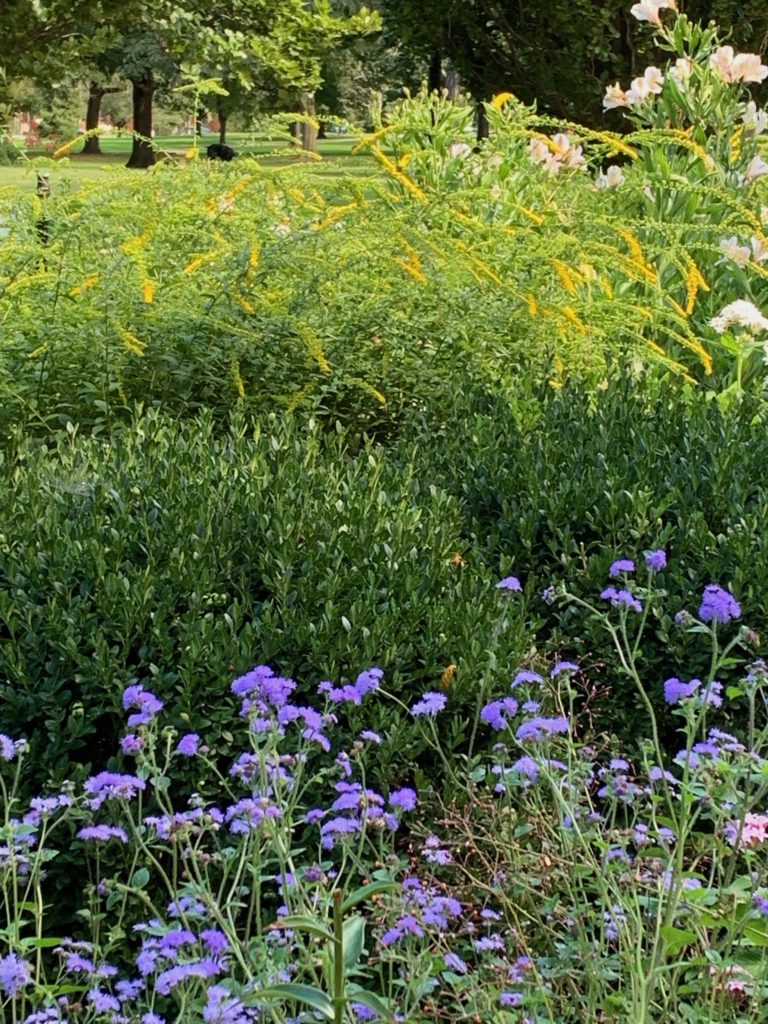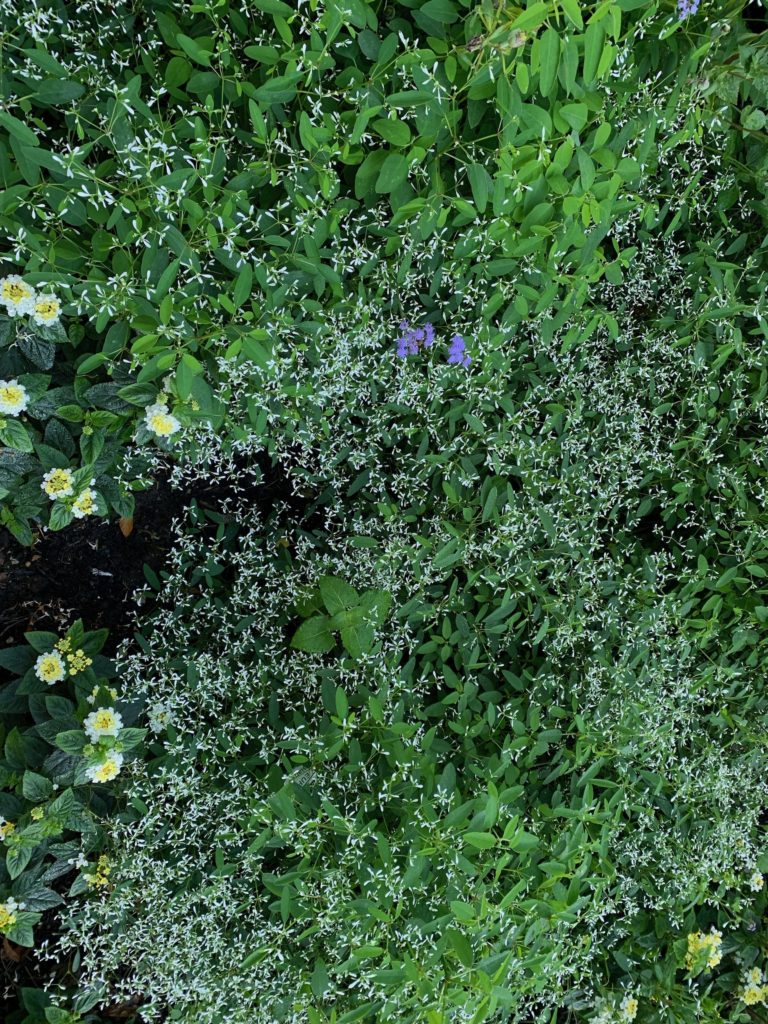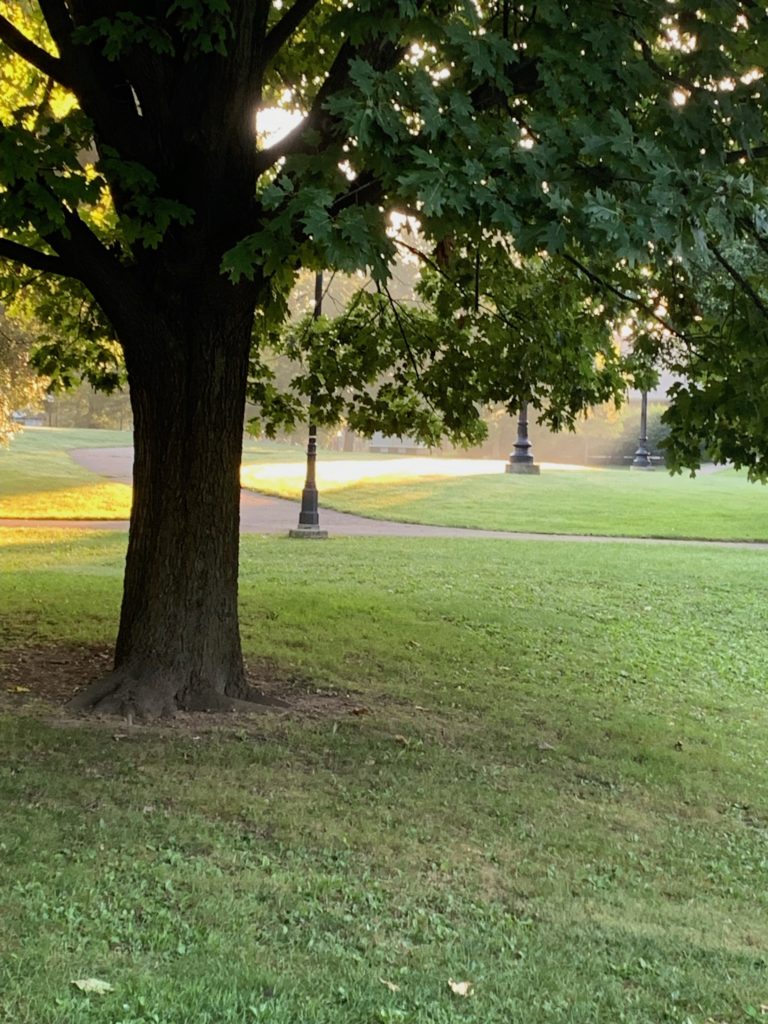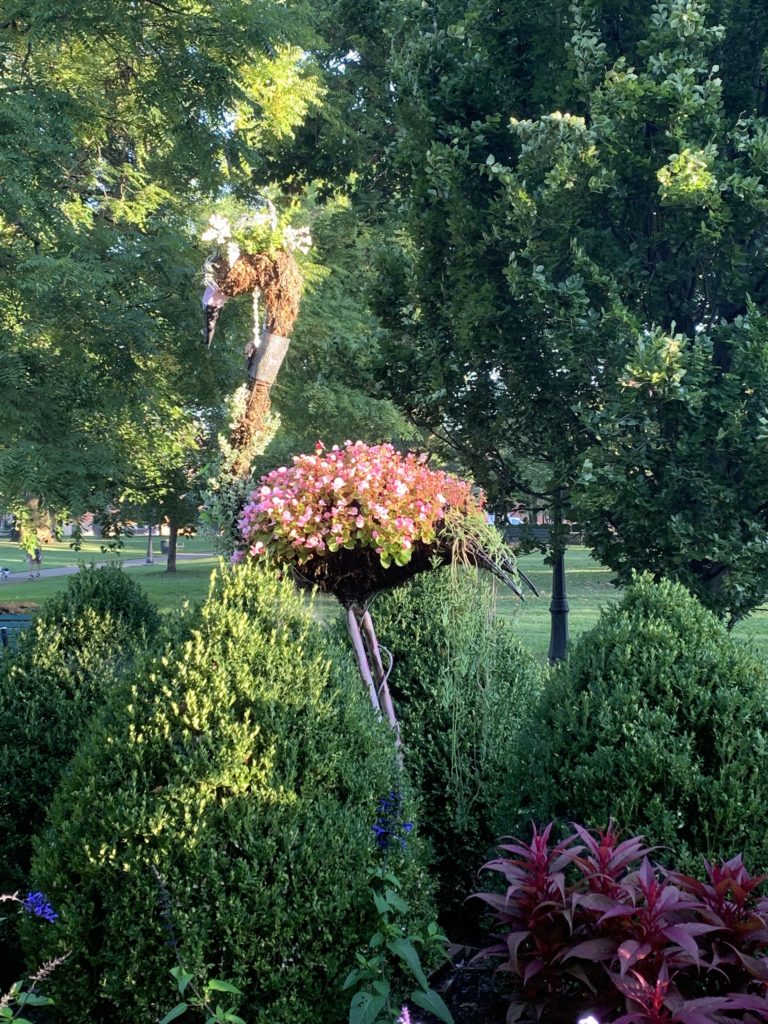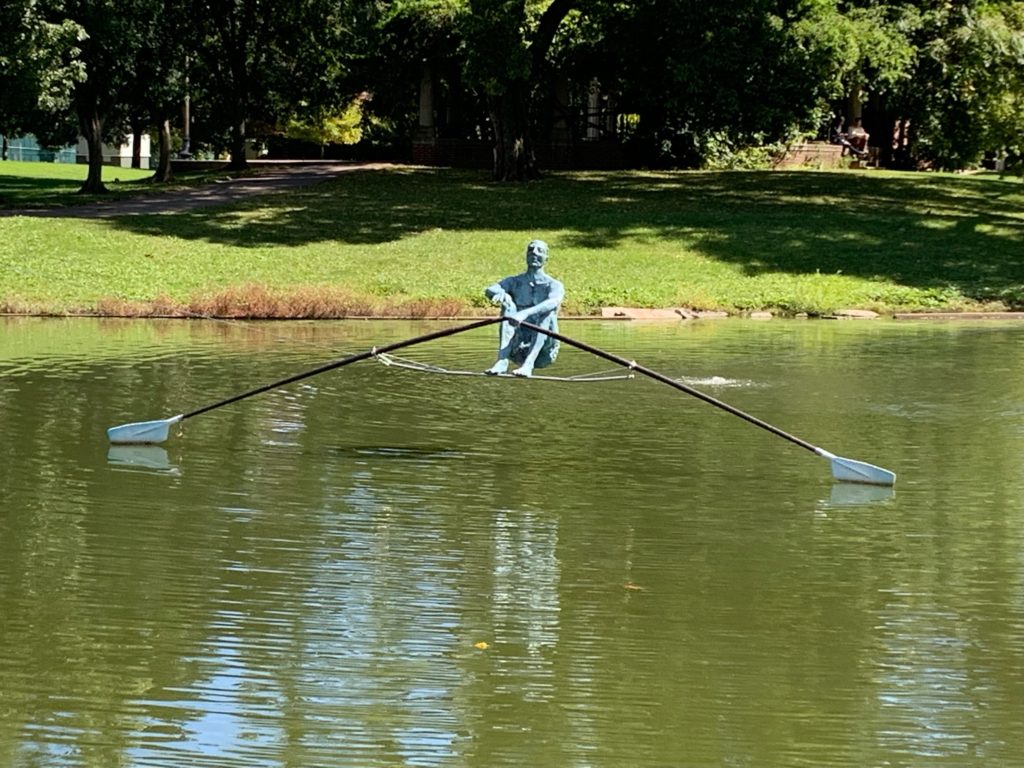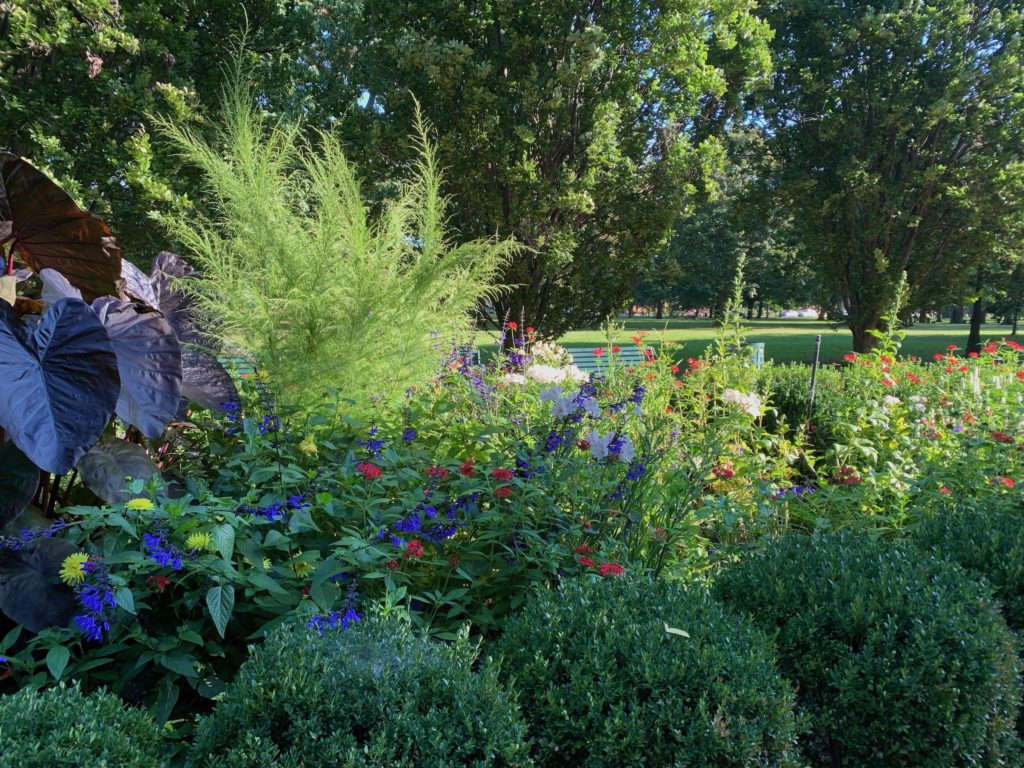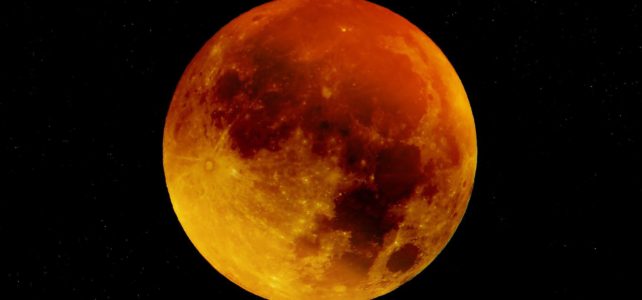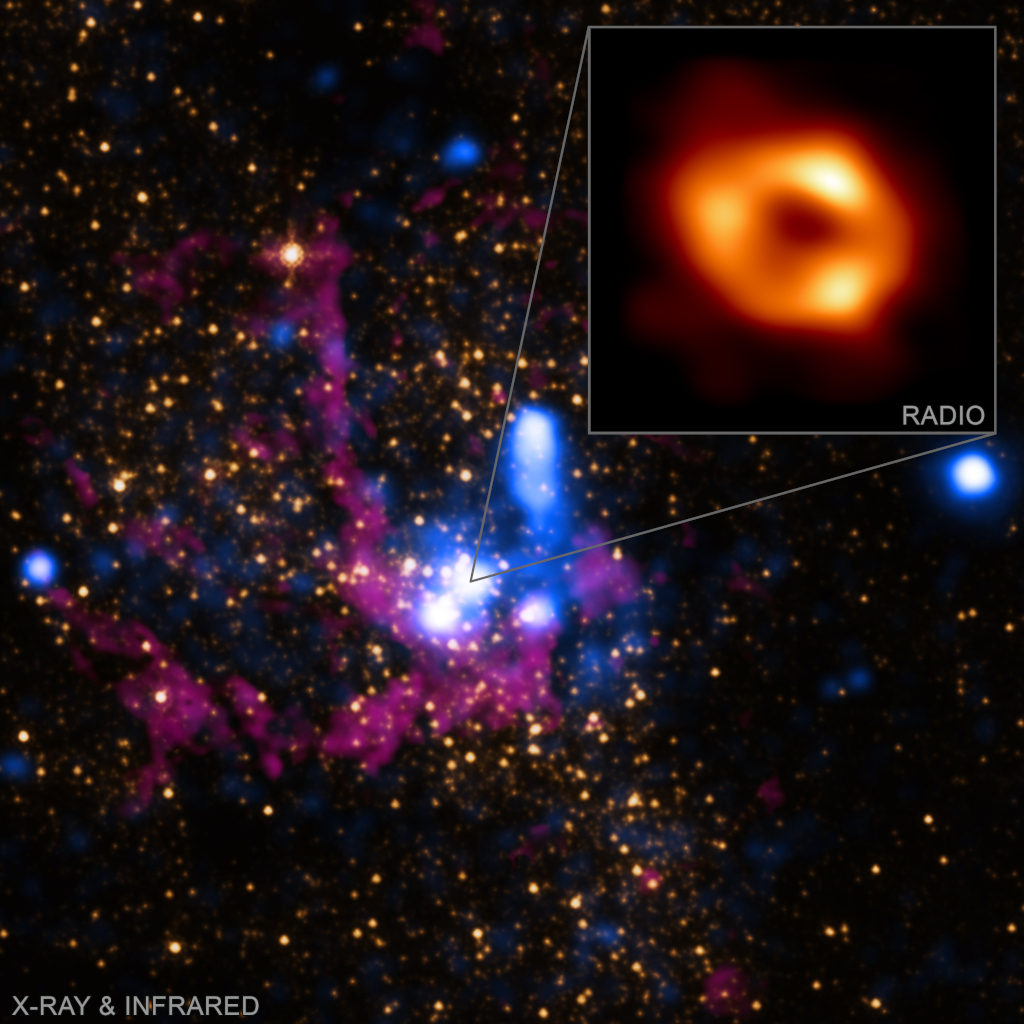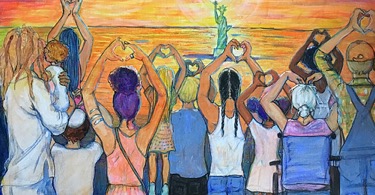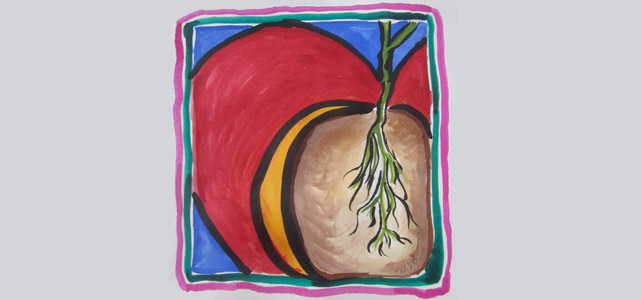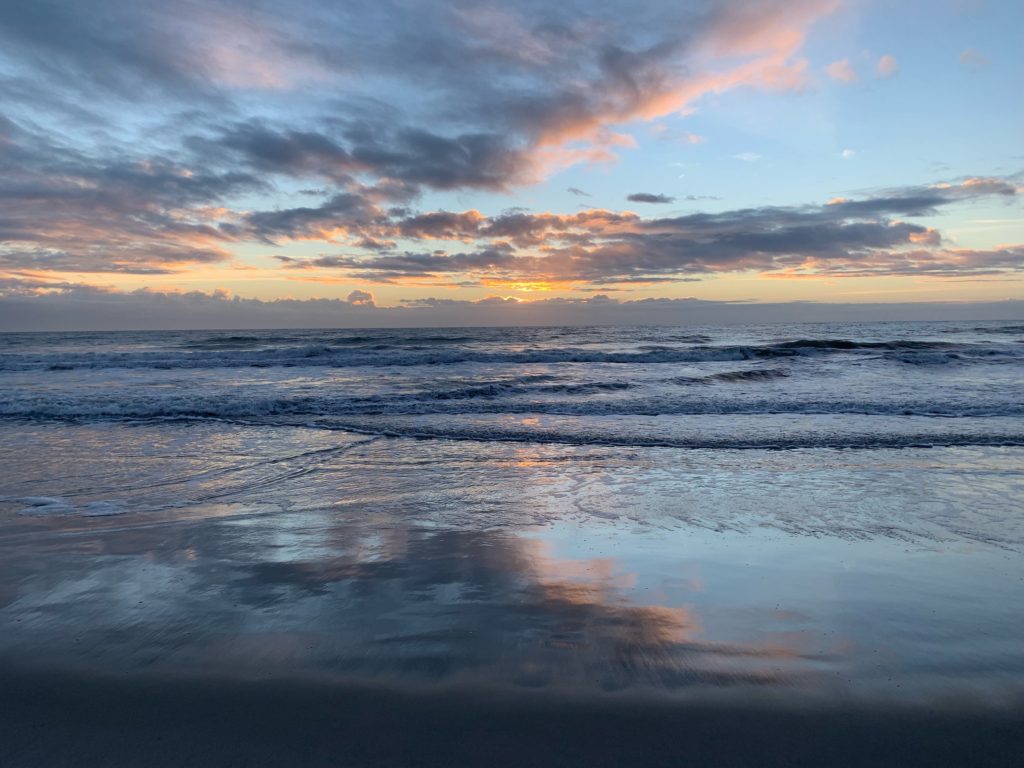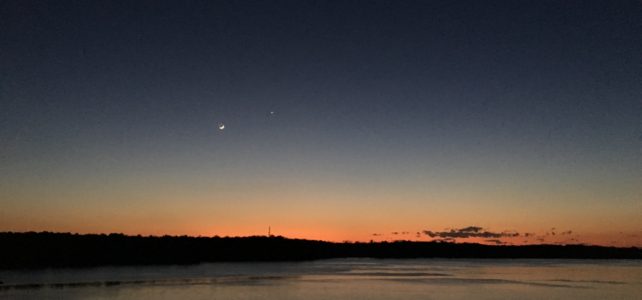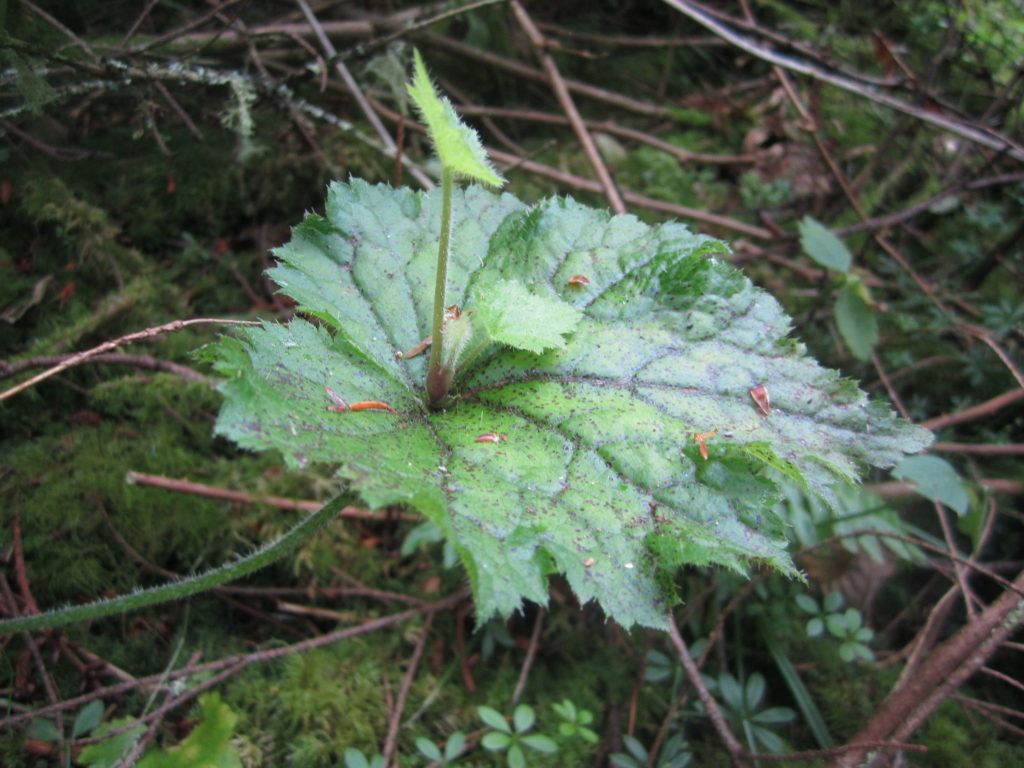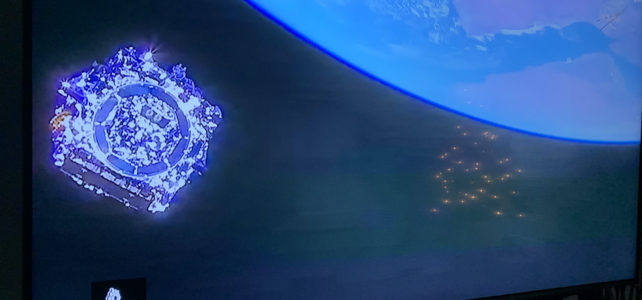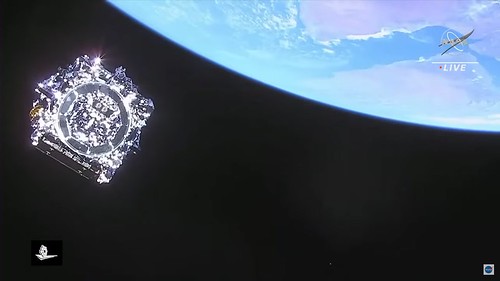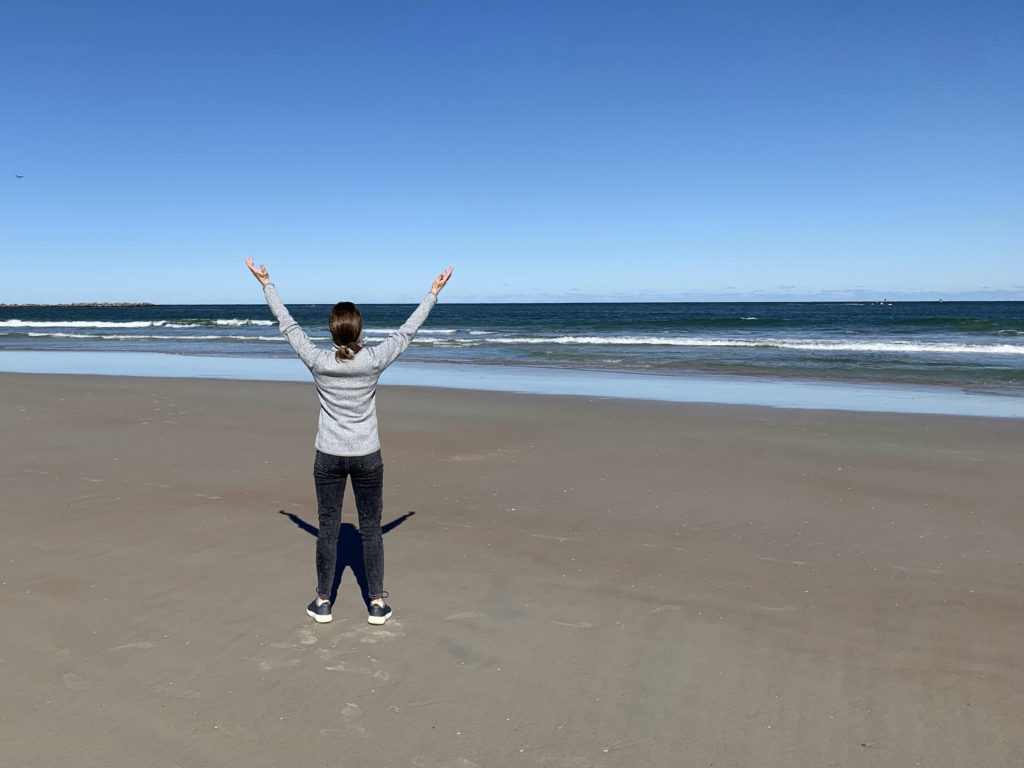The long-awaited 2024 Eclipse Day arrived at our viewing location, a hotel in mid- western Ohio, with a few, high wispy clouds in a blue sky. Much better than the cloud-cover app prediction. A gentleman in the elevator expressed what the eclipse seekers staying there were hoping: “Fingers crossed that the sky stays this clear!”
Early in the morning, our family placed chairs along the side of a grassy field behind the hotel. There were nine of us, gathered from different states and from Wales. Soon the field was edged with chairs, blankets, and a popup shelter. A young man made adjustments on his sophisticated telescope/camera setup while an inventive woman tested the fit of filters she’d made from cardboard and eclipse glasses film for her cellphone and binoculars.
Once the eclipse began with barely a nibble at the lower right of the sun, glasses went on and off as the celestial event progressed. One person did some painting. Another sketched and wrote in her journal. Some played games. Many enjoyed the opportunity to use a toddler’s sidewalk chalk and contributed to drawings on the blacktop parking lot.
The mood was festive. About 30 folks from around the country – ages spanning 90 to 2 years – talked, laughed, and told stories. Two NASA employees shared eclipse glasses that became desired souvenirs and answered lots of questions not only about the eclipse but also about their work at NASA. Potters, programmers, and teachers found one another and discovered surprising connections.
The crowd held its breath and watched with glasses on as Bailey’s Beads rimmed the sun’s edge and then disappeared. Totality! Glasses came off, and a cry went up. People clapped, hugged, cried, and simply gazed at what looked like a black hole in the sky ringed with the glowing white corona. If you haven’t seen a total solar eclipse, there is no way to describe the emotional impact of the event.
I have a strange sensation of being transported into my grammar school desk-sized model of the solar system that used thin metal rods and orbs of various sizes and colors to represent it. I’m looking through the spokes radiating from the sun, trying to see it, but earth’s moon is in the way.
Today’s sophisticated animations and real-life images of planets, moons, and other astronomical bodies provide more dramatic and accurate depictions of the universe and our place in it. But, as stunning as they are, they don’t deliver the visceral impact of standing outside, feet on a patch of earth, watching the moon move across the face of the sun with my own eyes.
A total solar eclipse pulls me into that big-picture and transforms my perspective. Suddenly, I don’t visualize myself walking in my neighborhood, a park, or even my favorite place, along the ocean. Instead, I’m hovering in the solar system. For an instant I have no thoughts or observations but simply a deep sense the wholeness of everything. It surrounds me. It dwells within me.
The event intensifies my amazement at the cosmos’ magnificent expanse and our planet’s minuscule presence in it. And me? Humans? We are less than a speck in space. Humbling. And distressing when I consider that humans are mostly unable to see our oneness as a race living on a planet that needs our cooperation to continue supporting us. People are unable to get along, obsessed with differences and the need of some to dominate and control others.
The totality provides a different possibility: For a few precious hours, the wonder of the eclipse offered a respite from the fear and anger that permeates much human interaction today. There was no hatred of others for simply being themselves.
Instead, we were connected by a sense of awe. People who gathered in that field related as fellow humans. Respectful. Appreciative. Some learned how to make a lattice with their fingers or to use a pinhole to see crescent shadows. The telescope guy welcomed others to look at his camera screen. We didn’t view one another as members of opposing political parties or of different faiths or of none, but as other humans willing to travel to experience an incredible sight.
Perhaps the most amazing thing about the moon’s passing in front of the sun wasn’t the shadow it cast on the earth. Or the 360° sunset. Or the confusion of animals and birds who thought it was night. Or the crescent shaped shadows or shimmering shadow bands. Or visible red prominences or dark sunspots.
It wasn’t how quickly the temperature dropped as the moon covered the sun or how quickly the temperature rose when even the tiniest sliver of light peeked out past the moon’s edge—revealing the power of our closest star. Or even the dazzling “diamond ring” that, for a second, stunned with brilliance, bursting out along the edge of the moon signaling the end of totality.
All this was incredible. Mind-blowing. Exhilarating. But the most amazing effect may have been that for those hours, a collection of humans of various political and religious leanings, of different prejudices and socioeconomic backgrounds, from different places, gathered amicably to celebrate and marvel at creation.
At the end of the afternoon and during the next morning as I watched people loading suitcases into cars and returning home, I wondered if the unity we shared for those hours would have any lasting effect on how we live our lives. Will any of us be more welcoming of diversity? More respectful? More compassionate? Less controlling? More kind? More aware of the fragility of our planet?
I think not. We will return to a world where people experience the constant stress of being “different” from those in power. People will continue to suffer from wars waged over land, ideology, resources, or simply a desire for power and personal aggrandizement. Change is painfully slow.
I pondered how to encourage change: Speak up for human dignity when conversations demean others. Respect scientists and their work. Contribute to politicians and campaigns that support human rights and care of the environment. Speak truth to power if only through emails, calls, or signing petitions. It boils down to doing what you can, where you are, small as that seems. To do good work. To care for the common good. To put love and kindness into the world.
My experience of the totality offers an additional practice: Look long and listen deeply to the natural world. Practice AWE. Allow yourself to be amazed by creation. A flower. A bird in flight. Refreshing rain. Weeds poking up through cracks in sidewalks, roads, and walls. Develop a contemplative approach to life that reveals the connectedness of all things and the Sacred Presence in it.
My daughter once said she learned about the interdependence of all things by spending childhood hours wading in the creek behind our house, noticing and studying the creatures in, on, and above the water. What might you do to let creation nurture your soul and inform your living?
Thank you, spectacular eclipse, for doing just that.
© 2024 Mary van Balen
Photo credits: Images of the eclipse from Jarred Keener. All other photos taken by Mary van Balen
Resource
In case you weren’t able to view the totality, here’s a link to NASA’s live coverage. Enjoy! 2024 Total Solar Eclipse: Through the Eyes of NASA
Solar systems and Galaxies
- Our solar system (the only one officially called that) is one of an estimated 3,200 planetary systems (stars with planets orbiting them) in our galaxy, the Milky Way.
- An older estimate of 100-200 billion galaxies in the observable universe has been expanded to 2 trillion galaxies using new images (from the Hubble and James Webb Space Telecsopes) and research methods.
